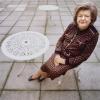Counting the number of lung cancer cells circulating in the blood could determine how aggressive the cancer is and help to tailor the most suitable treatment, according to Cancer Research UK.
Research published in the Journal of Clinical Oncology studied the number of circulating tumour cells (CTCs) in the blood samples of 101 lung cancer patients, before and after one cycle of chemotherapy. This identified that cancer patients with five or more CTCs had a significantly worse survival rate.
Chemotherapy and radiotherapy can slow the growth of lung cancer, however in most patients the cancer returns and is more resistant to treatment. At present there are no tests available that can provide an early warning about resistance. This study could provide a simple way to monitor how successfully a patient is responding to their treatment. By understanding the CTC numbers doctors will be able to adjust a patient’s treatment as needed.
Dr Fiona Blackhall, joint author and lung cancer clinician at The Christie in Manchester, said: "Our research shows a new way to monitor how a patient's lung cancer is responding to treatment and determine how aggressive it is. We now need to test our findings in more patients but, if our results are confirmed, there is now the potential to tailor treatments to individual patients and find new ways to treat the disease."
New drugs are in development to treat lung cancer, particularly tailored treatments that are designed to target genetic faults in lung cancer. However when new drugs are tested in clinical trials it is rarely possible to assess how the treatment is affecting the cancer cells at a molecular level. Counting the CTC’s potentially provides a way of identifying if the drug is working.
Until now the diagnosis of lung cancer has been made using a bronchoscopy, where a camera is passed into the airways and a needle is passed through to the camera to take a piece of tissue for diagnosis. However because this procedure is highly invasive it is normally only done once and it is not possible to look at changes in the cancer over time.
In 2008 approximately 41,000 people were diagnosed with lung cancer in the UK, which makes it the second most common cancer in the UK. Two thirds of all patients with lung cancer are diagnosed at a very late stage which ultimately means that lung cancer has one of the lowest survival rates of any cancer. Each year around 35,000 people die from the disease.





